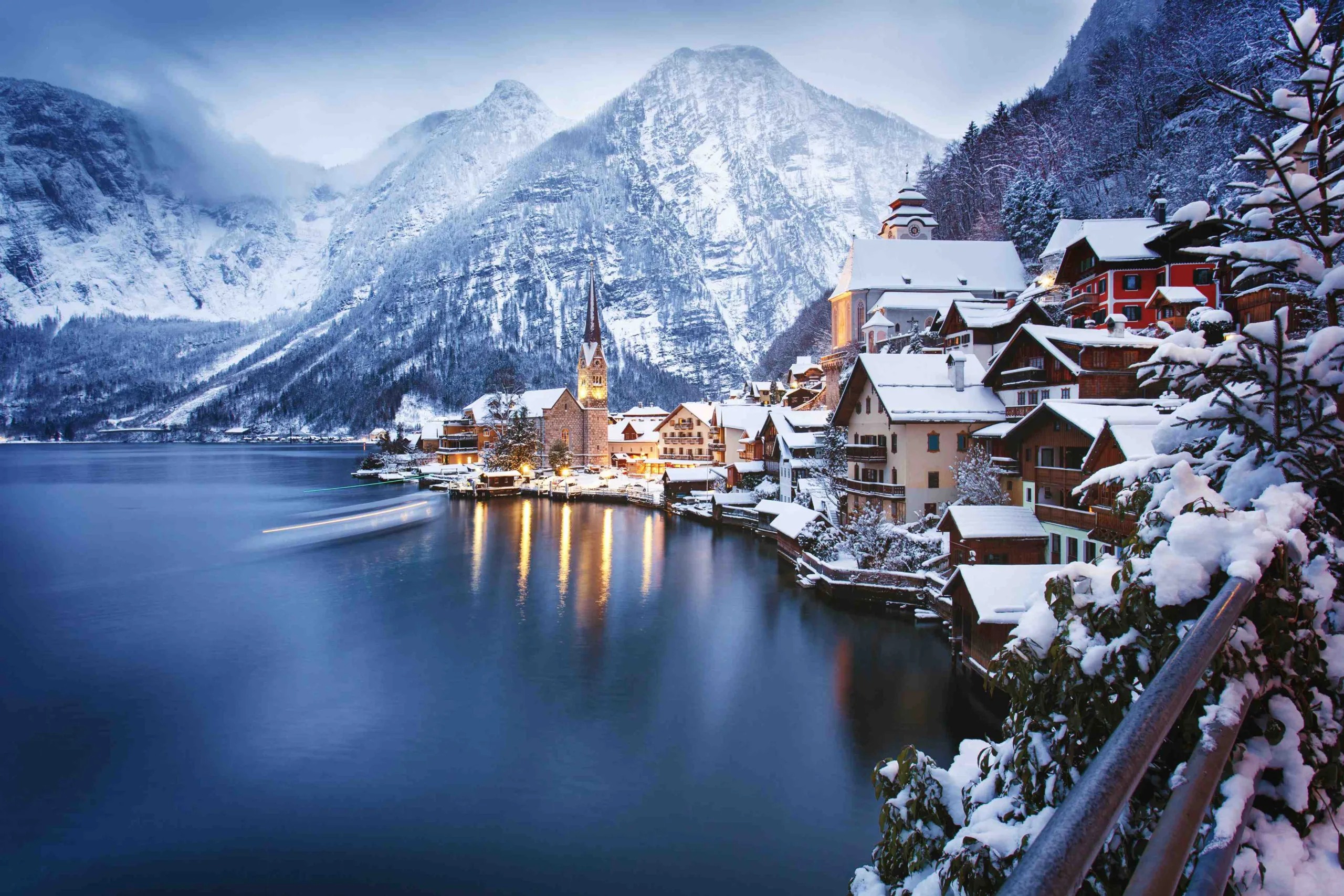Europe is a dream destination for many travelers. But timing your visit can make a huge difference.
Choosing the best time to visit Europe weather wise can be challenging. The continent offers a diverse climate, with each region having its own weather patterns. This means that the ideal time to visit one country might not be the best for another.
From the sun-drenched beaches of Spain to the snowy peaks of the Alps, Europe has it all. Understanding the weather can help you plan a perfect trip. Whether you prefer warm summer days or cool, crisp autumn mornings, knowing what to expect can enhance your travel experience. This guide will help you decide the best time to visit Europe based on the weather.
Spring In Europe
Spring in Europe is a magical time. From March to May, the continent bursts into life. Flowers bloom, and temperatures rise. It’s a season of renewal and beauty. Travelers find fewer crowds and lower prices. Spring is an ideal time to explore Europe.
Weather Characteristics
Spring weather in Europe varies by region. Southern Europe warms up quickly. Expect temperatures between 60-75°F (16-24°C). Northern Europe is cooler, with temperatures around 50-65°F (10-18°C). Rain showers are common, so pack an umbrella. Days grow longer, giving you more daylight to explore.
Top Destinations
Paris is a top spring destination. The city’s gardens and parks come alive. Amsterdam is famous for its tulip fields. The Keukenhof Gardens are a must-see. Rome offers pleasant weather for sightseeing. Visit the Colosseum and the Vatican without the summer crowds. Barcelona’s beaches and parks are perfect for a spring visit.
Activities To Enjoy
Spring is perfect for outdoor activities. Enjoy a picnic in Paris’s Luxembourg Gardens. Take a bike ride through Amsterdam’s tulip fields. In Rome, stroll through ancient ruins. Hike the scenic trails of the Cinque Terre in Italy. In Barcelona, relax on the beach or explore Park Güell. Spring festivals are also a highlight. Attend the Cherry Blossom Festival in Bonn, Germany. Experience the colorful Semana Santa in Spain. Enjoy the lively King’s Day celebrations in the Netherlands.
Summer In Europe
Summer in Europe is a magical time. The days are long, the weather is warm, and the cities are bustling with life. From the beaches of Spain to the fjords of Norway, there is something for everyone. Whether you are looking for a cultural experience or a relaxing vacation, Europe in summer will not disappoint.
Weather Characteristics
Summer weather in Europe varies by region. Southern Europe, including countries like Spain, Italy, and Greece, experiences hot temperatures. Expect temperatures to range from 25°C to 35°C. Northern Europe, including the UK, Germany, and Scandinavia, has milder temperatures. Here, temperatures range from 15°C to 25°C. The central part of Europe, like France and Switzerland, enjoys a pleasant climate with temperatures between 20°C and 30°C.
Popular Spots
Europe offers many popular spots during summer. Here are a few must-visit destinations:
- Paris, France: Enjoy the Eiffel Tower and Seine River cruises.
- Rome, Italy: Explore the Colosseum and Vatican City.
- Barcelona, Spain: Visit the Sagrada Familia and Park Guell.
- Amsterdam, Netherlands: Take a canal cruise and visit the Van Gogh Museum.
- Mykonos, Greece: Relax on beautiful beaches and enjoy vibrant nightlife.
Festivals And Events
Summer in Europe is full of festivals and events. Here are some highlights:
- Glastonbury Festival, UK: A five-day music festival in June.
- Running of the Bulls, Spain: Takes place in Pamplona in July.
- Tour de France, France: A famous cycling race in July.
- Edinburgh Festival Fringe, Scotland: The largest arts festival in the world in August.
- Oktoberfest, Germany: Though it starts in September, it’s a must-mention. Enjoy beer and cultural festivities.
Whether you enjoy warm beaches, cultural experiences, or vibrant festivals, Europe in summer offers a diverse and enriching experience.
Autumn In Europe
Autumn is a beautiful season to visit Europe. The leaves change colors, creating picturesque landscapes. The summer crowds have gone, making sightseeing more enjoyable. The weather is pleasant, and many cities host exciting festivals and events. Let’s explore what makes autumn in Europe so special.
Weather Characteristics
In autumn, Europe experiences mild temperatures. The weather varies from cool to crisp. You can expect occasional rain showers. The days are shorter, and the nights are cooler. This season offers a perfect balance between the summer heat and winter cold. Here’s a quick overview:
| Region | Temperature Range | Weather Type |
|---|---|---|
| Western Europe | 10-20°C (50-68°F) | Mild, occasional rain |
| Southern Europe | 15-25°C (59-77°F) | Warm, sunny |
| Northern Europe | 5-15°C (41-59°F) | Cool, rain showers |
| Eastern Europe | 10-20°C (50-68°F) | Cool, dry |
Best Cities To Visit
Europe has many cities that shine in autumn. Here are some top picks:
- Paris, France: Enjoy the fall foliage in Luxembourg Gardens.
- Prague, Czech Republic: The city looks magical in autumn hues.
- Barcelona, Spain: Warm weather and fewer tourists.
- Munich, Germany: Famous for Oktoberfest, a world-renowned festival.
- Florence, Italy: Explore museums without the summer crowds.
Seasonal Attractions
Autumn in Europe offers unique attractions. Here are some must-see events and activities:
- Oktoberfest in Munich: Experience the world’s largest beer festival.
- Grape Harvest Festivals: Many European countries celebrate the grape harvest with festivals.
- Autumn Foliage: Visit parks and countryside to see stunning fall colors.
- Food Festivals: Try seasonal dishes and local delicacies at various food festivals.
- Cultural Events: Enjoy art exhibitions, music concerts, and theater performances.
Autumn in Europe is truly a magical time. The weather is pleasant, the cities are beautiful, and the seasonal attractions are unforgettable.

Winter In Europe
Winter in Europe is a magical experience. From snow-covered landscapes to festive markets, the charm is undeniable. This season offers a unique blend of weather, picturesque destinations, and vibrant celebrations. Let’s dive into what makes winter in Europe so special.
Weather Characteristics
European winters vary widely. Northern and Eastern Europe often see heavy snowfall and freezing temperatures. Western Europe, on the other hand, experiences milder weather with occasional snow. Southern Europe enjoys a cooler climate but rarely sees snow.
Here’s a quick overview of winter weather in key regions:
| Region | Typical Weather |
|---|---|
| Northern Europe | Snow, freezing temperatures |
| Western Europe | Mild, occasional snow |
| Southern Europe | Cool, rare snow |
Winter Wonderland Destinations
Europe offers stunning winter wonderlands. Some must-visit destinations include:
- Switzerland: Home to the Swiss Alps, perfect for skiing and snowboarding.
- Austria: Famous for its charming villages and ski resorts.
- Norway: Experience the Northern Lights and picturesque snowy landscapes.
- Iceland: Known for its unique ice caves and geothermal spas.
These destinations offer a blend of natural beauty and winter sports. Perfect for adventure lovers and nature enthusiasts alike.
Holiday Celebrations
Winter in Europe is synonymous with festive celebrations. Christmas markets are a key highlight. Germany, Austria, and France boast some of the best markets.
- Germany: The Nuremberg Christmas Market is world-famous. Enjoy traditional crafts, food, and mulled wine.
- Austria: Vienna’s Christmas Market offers a romantic setting with beautiful lights and classical music.
- France: The Strasbourg Christmas Market is one of the oldest, known for its stunning decorations and local delicacies.
New Year’s Eve celebrations are equally grand. Cities like London, Paris, and Berlin host spectacular fireworks and street parties.
European winter holidays provide a rich cultural experience. Perfect for creating unforgettable memories with loved ones.
Comparing Seasons
Choosing the best time to visit Europe can be tricky. Each season has its own charm. To help you decide, let’s compare the seasons. We will look at the pros and cons, crowds and prices, and unique experiences each season offers.
Pros And Cons
Spring (March to May):
- Pros: Mild weather, blooming flowers, fewer tourists.
- Cons: Unpredictable rain, cooler evenings.
Summer (June to August):
- Pros: Warm weather, long days, vibrant festivals.
- Cons: High temperatures, crowded attractions.
Autumn (September to November):
- Pros: Comfortable temperatures, beautiful fall colors.
- Cons: Shorter days, occasional storms.
Winter (December to February):
- Pros: Festive Christmas markets, winter sports.
- Cons: Cold weather, limited daylight.
Crowds And Prices
Traveling in spring and autumn often means fewer crowds. These shoulder seasons offer better prices on flights and hotels. Summer attracts the most tourists, leading to higher prices. Popular sites can be crowded. Winter is less busy except during the holidays. Prices are usually lower, except in ski resorts and holiday hotspots.
Unique Experiences
Each season in Europe provides unique experiences. In spring, enjoy tulip festivals in the Netherlands. Summer offers beach days in the Mediterranean and music festivals. Autumn is perfect for wine tours in France and Italy. In winter, explore Christmas markets in Germany and Austria or ski in the Alps.

Tips For Planning
Planning a trip to Europe can be both exciting and challenging. The weather varies greatly across the continent, affecting travel plans. To make the most of your visit, consider these key tips. They will help you have a smooth and enjoyable trip.
Packing Essentials
Pack versatile clothing for different weather conditions. Europe’s weather can be unpredictable. Include layers such as jackets, sweaters, and scarves. Comfortable walking shoes are a must for exploring cities. Don’t forget an umbrella or raincoat, as rain is common in many regions. A universal adapter is necessary for charging your devices. Carry a small daypack for daily excursions.
Booking Accommodations
Book your accommodations well in advance. Europe can get crowded during peak seasons. Look for places close to public transport. This makes it easier to explore. Consider staying in local guesthouses or bed and breakfasts. They often provide a more authentic experience. Read reviews and check ratings before booking. This ensures you get a good quality stay.
Local Customs
Learn about local customs and etiquette. Each European country has its own traditions. Respecting these customs will enhance your experience. For example, dress modestly when visiting religious sites. Be mindful of quiet hours in residential areas. A few basic phrases in the local language go a long way. It shows respect and can help you connect with locals. Always greet people politely and thank them for their help.

Frequently Asked Questions
When Is The Best Time To Visit Europe For Good Weather?
The best time to visit Europe for good weather is late spring to early autumn. From May to September, you can enjoy warm temperatures, sunny days, and longer daylight hours.
Is Summer A Good Time To Visit Europe?
Yes, summer is a great time to visit Europe. The weather is warm, and many attractions are open. However, it can be crowded and more expensive.
What Is The Weather Like In Europe During Spring?
Spring in Europe is mild and pleasant. Temperatures gradually warm up, and you can enjoy blooming flowers and fewer tourists.
How Is The Weather In Europe During Autumn?
Autumn in Europe is cool and comfortable. Temperatures are mild, and the fall foliage creates beautiful landscapes, making it a great time to visit.
Conclusion
Planning your trip to Europe is all about timing. Spring offers blooming landscapes. Summer brings vibrant festivals. Fall showcases colorful foliage. Winter gives a magical snowy experience. Each season has unique charm. Consider weather preferences and activities. This will help you choose the best time.
Enjoy your European adventure!



